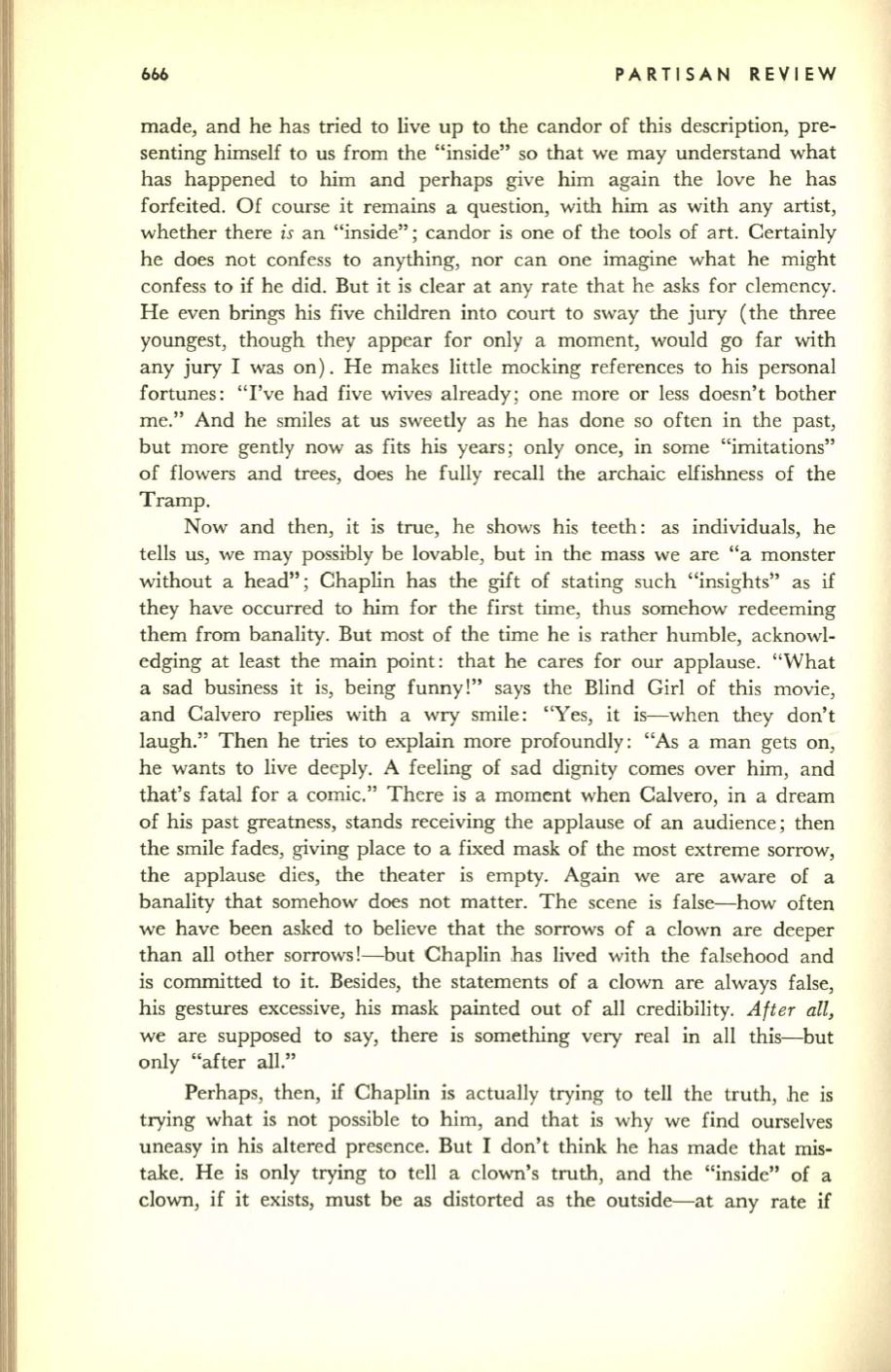
666
PARTISAN REVIEW
made, and he has tried to live up to the candor of this description, pre–
senting himself to us from the "inside" so that we may understand what
has happened to him and perhaps give him again the love he has
forfeited. Of course it remains a question, with him as with any artist,
whether there
is
an "inside"; candor is one of the tools of art. Certainly
he does not confess to anything, nor can one imagine what he might
confess to if he did. But it is clear at any rate that he asks for clemency.
He even brings his five children into court to sway the jury (the three
youngest, though they appear for only a moment, would go far with
any jury I was on). He makes little mocking references to his personal
fortunes: "I've had five wives already; one more or less doesn't bother
me." And he smiles at us sweetly as he has done so often in the past,
but more gently now as fits his years; only once, in some "imitations"
of flowers and trees, does he fully recall the archaic elfishness of the
Tramp.
Now and then, it is true, he shows his teeth: as individuals, he
tells us, we may possibly be lovable, but in the mass we are "a monster
without a head"; Chaplin has the gift of stating such "insights" as if
they have occurred to him for the first time, thus somehow redeeming
them from banality. But most of the time he is rather humble, acknowl–
edging at least the main point: that he cares for our applause. "What
a sad business it is, being funny!" says the Blind Girl of this movie,
and Calvero replies with a wry smile: "Yes, it is-when they don't
laugh." Then he tries to explain more profoundly: "As a man gets on,
he wants to live deeply. A feeling of sad dignity comes over him, and
that's fatal for a comic." There is a moment when Calvero, in a dream
of his past greatness, stands receiving the applause of an audience; then
the smile fades, giving place to a fixed mask of the most extreme sorrow,
the applause dies, the theater is empty. Again we are aware of a
banality that somehow does not matter. The scene is false-how often
we have been asked to believe that the sorrows of a clown are deeper
than all other sorrows!-but Chaplin has lived with the falsehood and
is committed to it. Besides, the statements of a clown are always false,
his gestures excessive, his mask painted out of all credibility.
After all,
we are supposed to say, there is something very real in all this-but
only "after all."
Perhaps, then, if Chaplin is actually trying to tell the truth, he is
trying what is not possible to him, and that is why we find ourselves
uneasy in his altered presence. But I don't think he has made that mis–
take. He is only trying to tell a clown's truth, and the "inside" of a
clown, if it exists, must be as distorted as the outside-at any rate if


